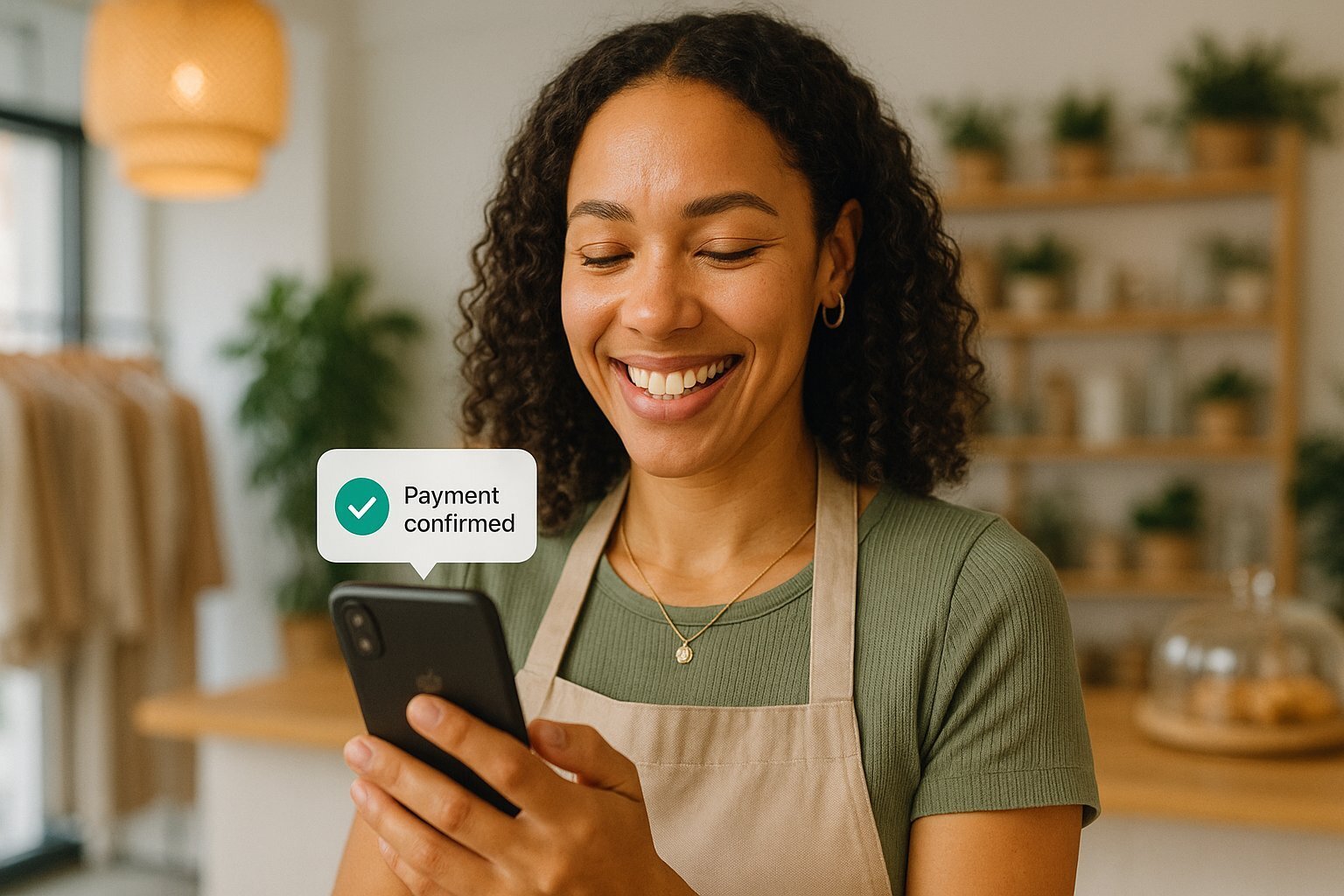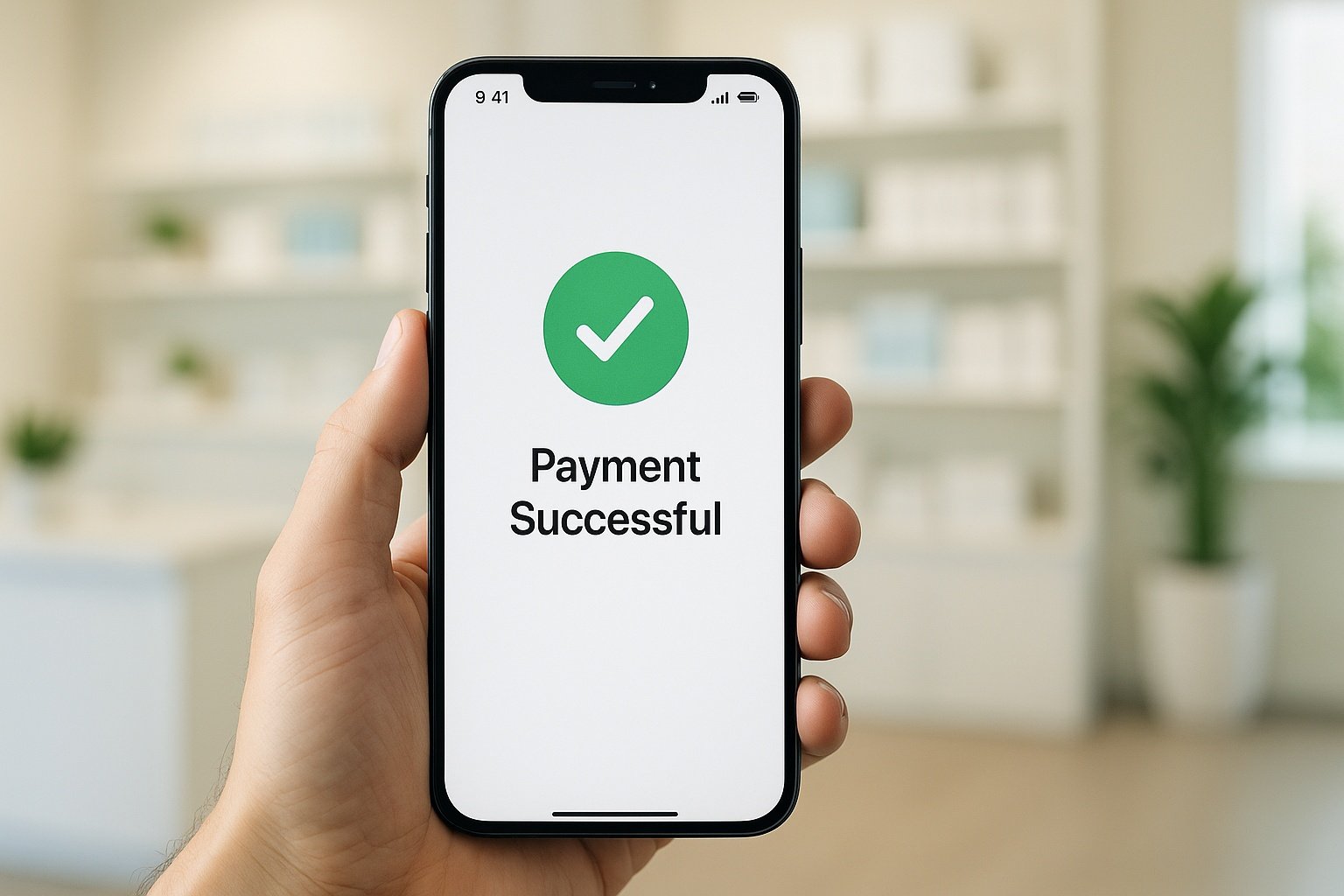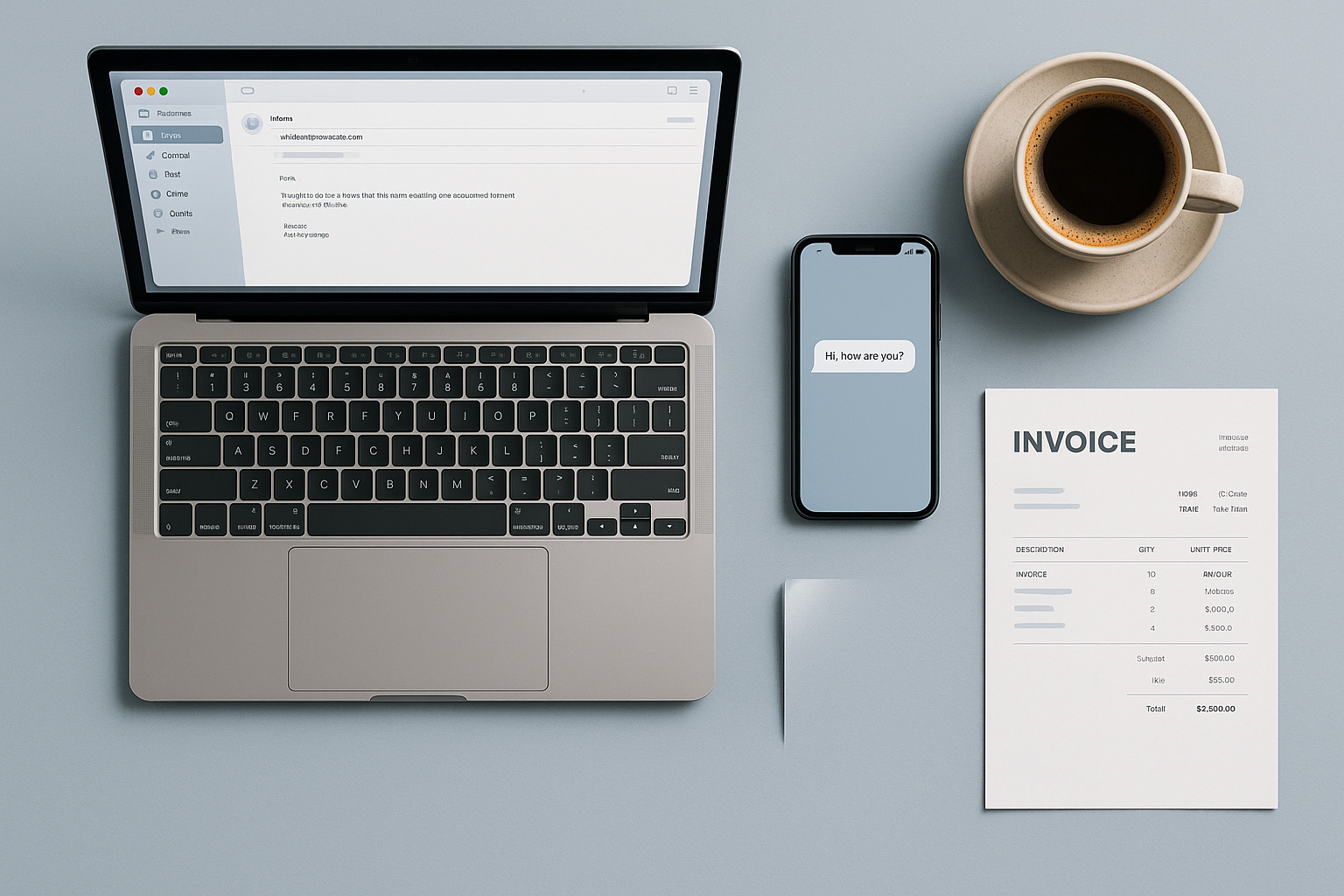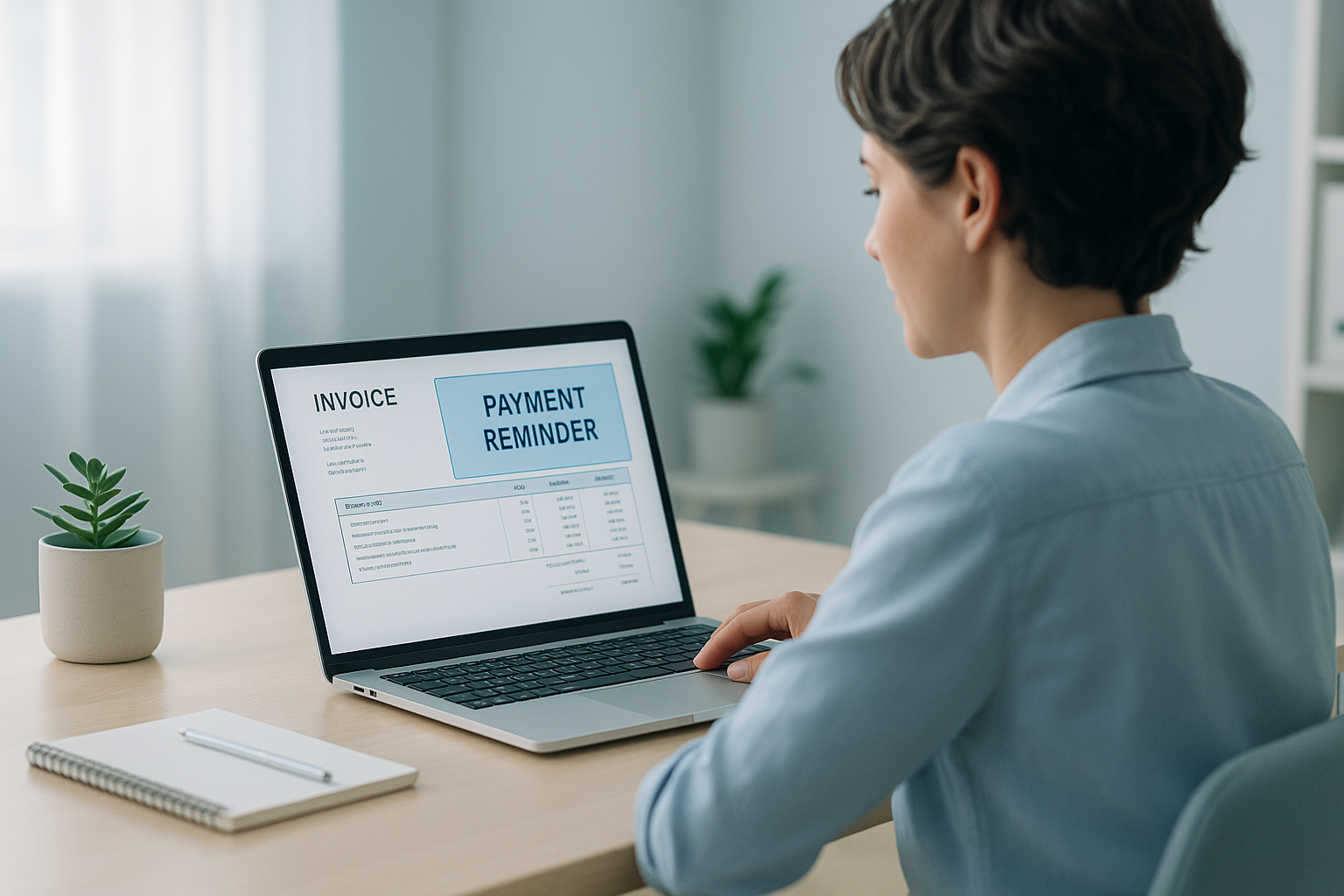What is Text to Pay? The Ultimate Guide to Pay By Text for Businesses
In a world where smartphones are extensions of our hands, the way businesses interact and transact with customers is constantly evolving. The most...
11 min read
Alvin Amoroso : 7/17/25 9:00 AM

In our hyper-connected, mobile-first society, the standards for convenience are constantly being redefined. Businesses are in a continuous race to eliminate friction from the customer experience, and nowhere is this more critical than in the payment process. From cash and checks to credit cards and online portals, the evolution of payments has always moved toward greater speed and simplicity. The next logical step in this evolution is meeting customers on the platform they use most: their smartphone's messaging app.
This is where SMS mobile payments come in. This powerful technology allows businesses to request and receive money directly through a simple text message, transforming a universal communication tool into a highly efficient transactional channel. For any organization looking to accelerate cash flow, reduce administrative burdens, and offer a truly modern payment experience, understanding how to accept sms mobile payments is no longer a forward-thinking luxury but a competitive necessity.
This comprehensive guide is designed to provide a deep, practical understanding of this technology. We will thoroughly answer the two most vital questions: How do mobile payments SMS actually work, and what are the precise steps to begin accepting them? We will dissect the entire process, explore the extensive benefits in detail, cover the crucial layers of security, and answer a wide range of frequently asked questions to fully equip you to leverage this transformative payment solution.
At its core, the term SMS mobile payments refers to a payment system where a business sends a customer a text message containing a unique, secure hyperlink. When the customer taps this link, they are instantly directed to a mobile-optimized, secure payment page hosted in their phone's web browser. On this page, they can review the payment details and complete the transaction using their preferred method, such as a credit card, debit card, or a digital wallet like Apple Pay or Google Pay. The defining characteristic of this method is its profound simplicity and accessibility; the customer does not need to download a proprietary app, remember a password, or navigate a complex website.
This entire ecosystem is powered by a specialized SMS payment provider. This service acts as the technological bridge between your business and your customer. It integrates with your existing business software (such as accounting, CRM, or practice management systems) to automatically generate these secure payment links, manage the sending of the text messages, and securely process the final transaction through established payment networks. Immediately upon successful payment, the provider's system communicates back to your software, marking the invoice as paid and sending confirmation receipts to both you and your customer. This creates a fully automated, transparent, and auditable workflow from the initial request to the final reconciliation.
It's important to distinguish SMS payments from other forms of mobile transactions. Unlike app-based payments (like Venmo or PayPal for P2P), SMS payments don't require the customer to have a specific app installed. Unlike QR code payments, they don't require the customer to be physically present to scan a code. And unlike USSD payments, which use complex codes, SMS payments leverage a simple, intuitive web interface that customers are already comfortable with. This universal accessibility is what makes it such a powerful tool for a broad range of businesses.
The decision to adopt a new payment technology must be justified by clear, measurable benefits. The case for being able to accept sms mobile payments is exceptionally strong, offering significant advantages that impact everything from your daily cash flow to your long-term customer loyalty.
In today's economy, convenience is a currency in itself. The easier you make it for customers to pay you, the happier they will be and the faster you will get paid. Contrast the SMS payment experience with traditional methods. A paper invoice requires the customer to find the bill, write a check or find their credit card, find a stamp, and mail it back. An email invoice can get lost in a cluttered inbox and requires them to log into a portal, often on a desktop. An SMS payment request, however, arrives on a device that 91% of adults keep within arm's reach 24/7. They can pay the bill in under a minute, turning a tedious chore into a simple tap-and-pay action. This frictionless experience demonstrates that you value your customer's time, which is a powerful driver of satisfaction and loyalty.
This is perhaps the most immediate and impactful benefit for any business. The speed of SMS payments directly translates to faster cash flow. Consider these metrics: SMS messages have an industry-reported open rate of up to 98%, compared to just 20-30% for emails. Furthermore, 90% of those text messages are read within three minutes of being received. When you place a direct payment link into such a highly visible channel, you drastically shorten the payment cycle. Businesses that adopt SMS mobile payments often report reducing their Days Sales Outstanding (DSO) significantly. Instead of waiting weeks for a check to arrive and clear, you receive funds in days, or even hours, providing the working capital needed for payroll, inventory, and growth.
While customers value convenience, they demand security. Reputable mobile payments SMS platforms are built on a foundation of robust, multi-layered security protocols, making them one of the safest ways to transact. Here’s how:
The operational savings from switching to SMS mobile payments are substantial. Think about the tangible and intangible costs of traditional invoicing. There are the direct costs of paper, ink, envelopes, and postage, which can add up to thousands of dollars per year. Then there are the labor costs—the hours your administrative staff spend printing, folding, stuffing, mailing, and then manually reconciling payments. Most significantly, there's the time spent chasing down late payments. An automated SMS system eliminates almost all of these costs. Digital delivery is a fraction of the cost of mail, and automated reminders can be scheduled to follow up on overdue invoices without any human intervention, freeing your team to focus on customer service and business growth.
In a world of overflowing email inboxes and ad-blockers, SMS is a uniquely direct and uncluttered communication channel. Because it is reserved for more personal or urgent communications, customers pay attention to it. When you send a payment request via SMS, you are virtually guaranteed that your message will be seen. This high visibility ensures your invoice doesn't get buried, ignored, or sent to a spam folder. This leads to more reliable communication and a more predictable collections process.
To truly appreciate the elegance of SMS mobile payments, it's helpful to walk through the entire process from start to finish. This detailed breakdown shows the seamless integration of technology and user experience.
Your journey begins with selecting the right technology partner. This is a critical decision, as the provider's platform will be the engine of your entire payment system. Your evaluation should be thorough. Create a checklist of essential features, including robust integration options for your specific accounting or CRM software, transparent and predictable pricing, certified PCI compliance and advanced fraud detection tools, and highly responsive customer and technical support. A good provider is more than a vendor; they are a partner in your financial operations.
Once selected, the provider’s service must be connected to your core business systems. This integration is what enables automation. For many businesses using common software like QuickBooks, Xero, Salesforce, or Shopify, providers offer simple, pre-built "plug-and-play" connectors that can be set up in minutes with no coding required. For companies with proprietary or highly customized software, providers offer well-documented APIs (Application Programming Interfaces). An API allows your developers to build a custom, secure bridge that lets your software "talk" directly to the payment platform, enabling fully tailored workflows.
With the systems connected, the process of creating a payment request becomes automated. This request is typically triggered by an event in your system—for example, when a new invoice is created, a service appointment is completed, or a monthly subscription is due for renewal. The integration pulls all the necessary data in real-time: the customer's name and mobile number, the specific invoice number for reference, and the exact amount owed. The payment platform then generates a unique, secure, and trackable payment link for this individual transaction.
The provider's platform instantly sends a text message to the customer's mobile number. This isn't just a raw link; it's a carefully crafted message designed for clarity and trust. A best-practice message will clearly state your business name, the amount due, and a brief call to action, such as "Please click here to pay your invoice." This professionalism ensures the customer immediately recognizes the request as legitimate, reducing hesitation and encouraging a quick response. The use of registered short codes or A2P (Application-to-Person) approved long codes ensures high deliverability rates, avoiding carrier spam filters.
The customer receives the text and, with a single tap on the link, their phone's default web browser opens the secure payment page. This page is meticulously designed for a mobile experience, with large fonts, simple form fields, and a clear layout. They will see the charge details confirmed and be presented with various payment options. They can either manually enter their credit or debit card information or, for maximum convenience, use a one-tap digital wallet option like Apple Pay or Google Pay, which automatically fills in their payment and shipping information.
The moment the customer hits the "Pay Now" button, the transaction is securely processed by the payment gateway in a matter of seconds. Upon a successful transaction, the customer's screen immediately displays a confirmation message. Simultaneously, the system triggers a cascade of confirmations: an SMS and/or email receipt is sent to the customer for their records, and a notification is sent to your business. Critically, the provider's system communicates back to your integrated software, automatically marking the corresponding invoice as "Paid." This instant feedback loop eliminates uncertainty for the customer and saves your team from manual data entry.
The final step is reconciliation, a process that is drastically simplified by the system's tracking capabilities. The payment provider’s online dashboard serves as your central command center for all SMS mobile payments. Here, you can view the status of all requests in real-time, see which have been paid and which are still outstanding, and access detailed transaction histories. You can generate a variety of financial reports, such as daily settlement reports, transaction fee breakdowns, and aging reports for any outstanding balances. Because every payment is automatically tied to a specific customer and invoice, the time-consuming and error-prone task of manual reconciliation becomes obsolete.
Making the move to accept sms mobile payments is a practical and achievable goal. By approaching it methodically, you can ensure a successful implementation that benefits your business and your customers.
Your choice of platform is the most critical decision in this process. A thorough evaluation will pay dividends later. Go beyond the marketing claims and assess each potential provider against your specific needs. Key criteria to consider:
The pricing for SMS payment services is typically a combination of a per-transaction fee and sometimes a monthly subscription fee. A common model is a percentage of the transaction (e.g., 2.9%) plus a fixed fee (e.g., $0.30). To calculate your potential return on investment (ROI), you must look beyond this fee. Calculate the money saved on paper, printing, and postage. Estimate the value of the administrative hours saved from manual invoicing and reconciliation. Most importantly, quantify the positive impact of improved cash flow—what is it worth to your business to get paid 15, 30, or even 45 days faster? Often, the efficiency gains and accelerated revenue far outweigh the transaction fees.
Compliance is non-negotiable. In the United States, the primary regulation governing commercial text messages is the Telephone Consumer Protection Act (TCPA). The TCPA requires you to obtain "express written consent" from a customer before sending them transactional texts. This consent must be unambiguous. The best practice is to include a dedicated checkbox and clear disclosure language on your new customer forms, terms of service agreements, or online checkout process. For example: "By checking this box, you agree to receive transactional text messages from [Your Company Name] regarding billing and payments at the mobile number provided." It's also wise to consult with a legal professional to ensure your opt-in process is fully compliant.
SMS payments are a method for conducting financial transactions where a business sends a payment request to a customer via a standard text message (SMS). This message contains a secure, unique link that directs the customer to a mobile-friendly webpage where they can complete their payment using a credit card, debit card, or a digital wallet. The system is designed to be app-free and highly accessible.
The meaning of an SMS payment extends beyond the simple technology; it represents a fundamental shift toward customer-centric commerce. It signifies a business's commitment to meeting customers on their preferred communication channel and removing the friction that plagues traditional payment methods. It's about leveraging a direct, personal, and trusted channel to make the process of paying a bill as simple as replying to a text, fostering goodwill and speeding up cash flow.
To properly ask for payment via SMS, your message must be clear, concise, and professional to build trust. An effective payment request message should always include: 1) Your business's name for immediate identification. 2) The customer's name for personalization. 3) The specific amount due. 4) A clear call-to-action with the secure payment link. For example: "Hi David, this is a reminder from Green Lawn Care. Your invoice for $65.00 is ready. Please pay securely here: [https://www.google.com/search?q=unique-payment-link.com]. Thank you!"
An SMS invoice payment is a specific application of SMS payments used for detailed billing. Instead of just requesting a simple payment, the SMS link takes the customer to a full digital invoice. This page will display an itemized list of charges, quantities, and descriptions, just like a traditional paper or PDF invoice. The page will also have an integrated "Pay Now" button, allowing the customer to review the detailed charges and settle the full invoice directly from their mobile device.
Yes, when implemented through a reputable provider, SMS payments are highly secure. Security is based on several layers: the payment links are unique and often expire; the payment pages are hosted on PCI-compliant servers; and customer card data is protected using advanced encryption and tokenization. This process is often more secure than taking a credit card number over the phone or handling physical checks, as it minimizes the direct handling of sensitive data by your staff.
The case for embracing SMS mobile payments is more compelling than ever. It's a technology that directly addresses some of the most persistent challenges in business: slow payments, high administrative costs, and the growing demand for customer convenience. By providing a payment channel that is not only efficient for your operations but also remarkably simple for your customers, you create a true win-win scenario. The ability to accept sms mobile payments is a strategic move that enhances cash flow, reduces operational drag, and aligns your business with the expectations of the modern consumer.
The detailed steps and considerations outlined in this guide offer a clear blueprint for implementation. By understanding how the technology works, how to choose the right partner, and how to adhere to best practices, you can confidently integrate this solution into your business. You’re not just adopting a new payment method; you are investing in a more resilient financial future and building stronger, more positive relationships with the customers you serve.

In a world where smartphones are extensions of our hands, the way businesses interact and transact with customers is constantly evolving. The most...

Learning how to ask for payment professionally in message is one of the most crucial yet uncomfortable tasks for any freelancer, consultant, or...

Cash flow is the lifeblood of any business, from solo freelancers to burgeoning enterprises. Yet, one of the most common and frustrating challenges...